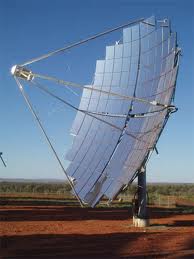Overview
In 2018, India was the third largest solar market in the world behind China and the United States with 8.3 GW of solar PV capacity installed in the year. India's solar capacity addition is set for a record in 2019.
New installations this year will reach nearly 14 gigawatts (GW), which is about 50% more than the capacity added last year, according to a report by an Energy Consultancy Firm. The new capacity addition will take India's installed solar capacity to about 38 GW by the end of the year. Overall, the country is estimated to add nearly 16 GW of clean energy capacity in 2019, driven by large-scale solar projects.
In the second quarter (Q2) of year 2018, Indian solar installation rate stood at 1.6 GW and in the third quarter (Q3) it even fell further to 1.5 GW, highlighting 30% y-o-y decline in solar growth from 2017 to 2018.

Reasons behind Industry Decline
Policy disruptions in 2018 like- 25% safeguard duty have affected domestic solar power manufacturing sector, made domestically manufactured solar equipment expensive and safeguard duty has failed to reduce the solar equipment influx, as the imported equipment remained cheaper than domestically manufactured products even after safeguard imposition.
Additionally, differential GST rates imposed upon solar components have created confusion in the industry. Currently, solar panels, solar lantern/solar lamp attract 5% GST rate, however a long list of important equipment needed for solar plant development are being charged 12/18% GST.
Expectations From 2019
In 2019 , renewable energy in India is expected to add 10-15 GW capacity, out of which most is expected to come from solar. Government of India is focusing on rooftop solar power growth of about 40% more than year 2018.
 INDIAN Solar Industry AT A Glance IN 2017 - 2018
INDIAN Solar Industry AT A Glance IN 2017 - 2018
 INDIAN Solar Industry AT A Glance IN 2016 - 2017
INDIAN Solar Industry AT A Glance IN 2016 - 2017
 INDIAN Solar Industry AT A Glance IN 2015 - 2016
INDIAN Solar Industry AT A Glance IN 2015 - 2016
 INDIAN Solar Industry AT A Glance IN 2014 - 2015
INDIAN Solar Industry AT A Glance IN 2014 - 2015
 INDIAN Solar Industry AT A Glance IN 2013 - 2014
INDIAN Solar Industry AT A Glance IN 2013 - 2014
 INDIAN Solar Industry AT A Glance IN 2012 - 2013
INDIAN Solar Industry AT A Glance IN 2012 - 2013
 INDIAN Solar Industry AT A Glance IN 2011 - 2012
INDIAN Solar Industry AT A Glance IN 2011 - 2012
 back to solar INDUSTRies
back to solar INDUSTRies
 |
INDIAN INDUSTRIES |



 INDIAN SOLAR INDUSTRY AT A GLANCE IN 2018 - 2019
INDIAN SOLAR INDUSTRY AT A GLANCE IN 2018 - 2019